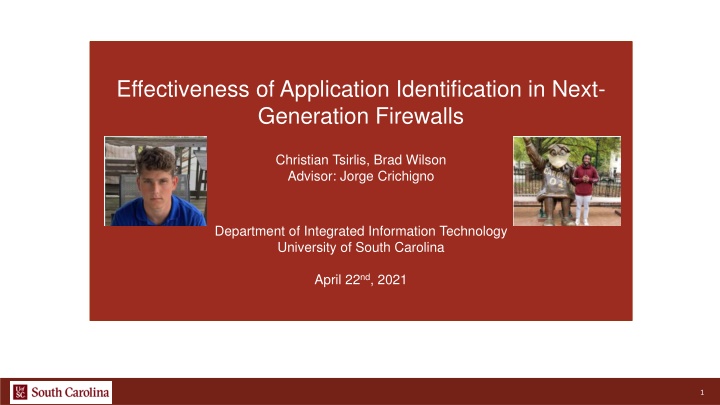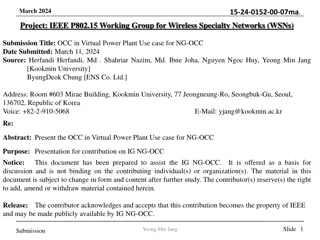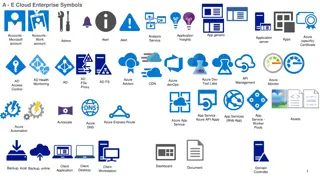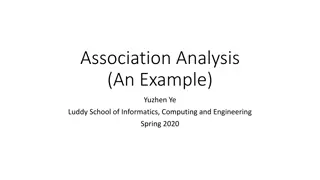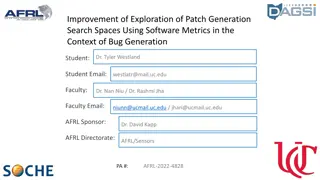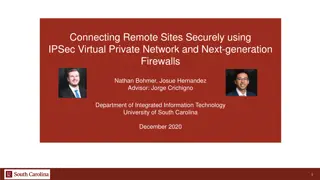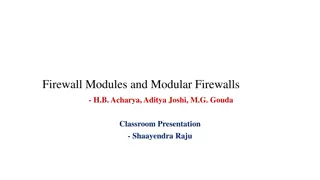Application Identification in Next-Generation Firewalls
Effectiveness of application identification in enhancing security policies and network protection with a focus on next-generation firewalls. Understand the challenges posed by evasive applications and how application identification can mitigate threats. Delve into proposed solutions, implementations, and the impact on safeguarding internal networks.
Download Presentation

Please find below an Image/Link to download the presentation.
The content on the website is provided AS IS for your information and personal use only. It may not be sold, licensed, or shared on other websites without obtaining consent from the author.If you encounter any issues during the download, it is possible that the publisher has removed the file from their server.
You are allowed to download the files provided on this website for personal or commercial use, subject to the condition that they are used lawfully. All files are the property of their respective owners.
The content on the website is provided AS IS for your information and personal use only. It may not be sold, licensed, or shared on other websites without obtaining consent from the author.
E N D
Presentation Transcript
Effectiveness of Application Identification in Next- Generation Firewalls Christian Tsirlis, Brad Wilson Advisor: Jorge Crichigno Department of Integrated Information Technology University of South Carolina April 22nd, 2021 1
Agenda Purpose Introduction Problem description Background information Next-generation Firewalls (NGFWs) and how they compare to traditional firewalls Application Identification Proposed solution and implementation Conclusion 2
Purpose Understand Application Identification Understand Security Policy rules Implement Application Identification in Security Policies Protect network from outside attackers by analyzing traffic traversing the network Build stronger policies to minimize attacks 3
Introduction An application is a program or feature whose traffic can be labeled and monitored. Figure 1. Example of Applications and their sub-applications 4
Problem Description Suspected malicious activity from Internet attempting to access internal network Evasive applications from Internet trying to enter internal network Effectiveness of security policies using Application Identification to protect internal network Figure 2. Network Topology 5
Background Information Traditional Firewalls Identify traffic by IP address, port and protocol Create holes which can be exploited by attackers Application Identification Identifies traffic by application Helps detect applications that evade traditional Figure 3. Shows how applications can enter a Traditional firewall firewall 6
Proposed Solution and Implementation Application Identification was used to analyze Skype application Figure 4. Security Policy for Application Identification using Skype Results Skype uses numerous IP destination addresses to connect Security policy blocks any file sharing and chat messages Figure 2. Network Topology Security policy fails to block audio/video calls 7
Analyzing Skype Data Figure 5. Monitor logs showing numerous IP destination addresses 8
Twitter Results Twitter-base Blocking this application was successful Example Could not access twitter at all Twitter-posting Blocking this application was unsuccessful Examples Could like tweets Could comment on tweets Could retweet 9
Twitter Data 10
Conclusion Why is this work important? Our test highlights, that there are some weaknesses in Application Identification and how applications are evolving and finding a way to evade firewalls. Future work includes deeper packet analysis Questions? Thank you for listening and watching 11
